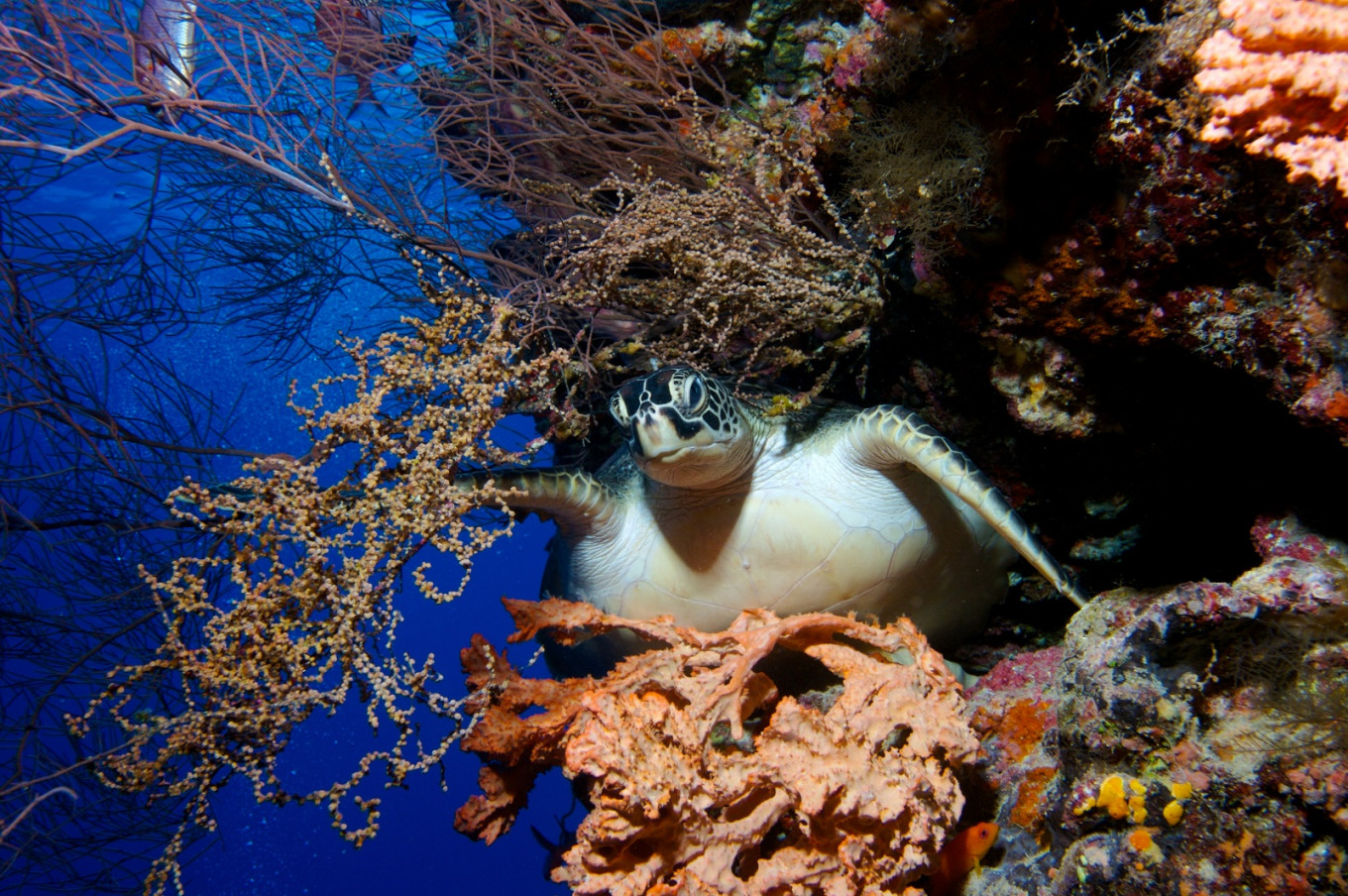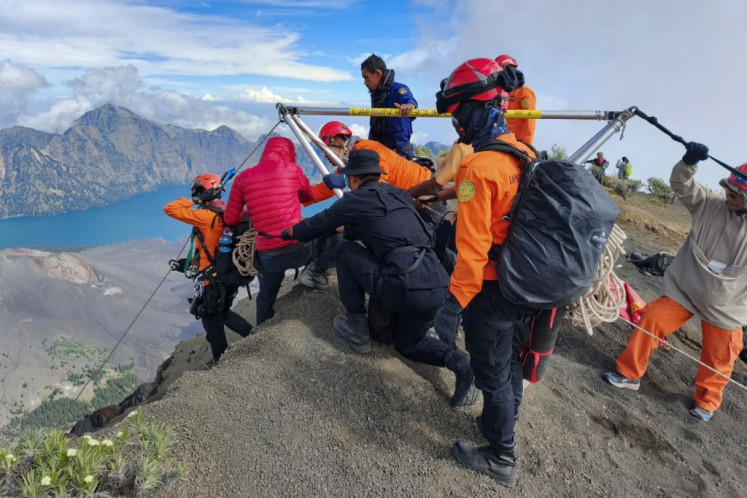Popular Reads
Top Results
Can't find what you're looking for?
View all search resultsPopular Reads
Top Results
Can't find what you're looking for?
View all search resultsConserving sea turtles, conserving our future
The loss of sea turtles will jeopardize jobs and coastal economies, especially in developing countries.
Change text size
Gift Premium Articles
to Anyone
S
ea turtles have roamed the oceans for the last 110 million years. Having existed for so long, however, does not mean that sea turtles live stress-free lives. In fact, current sea turtle populations are greatly threatened by several human activities, such as unselective fisheries, direct take, predation, light pollution, illegal trade, habitat loss and climate change, to name a few.
Most of these threats are induced by humans and have caused sea turtle populations to plummet in the last few decades. Globally, all seven species of sea turtles are either classified as vulnerable, endangered or critically endangered by the International Union for Conservation of Nature’s Red List, meaning that the populations have been reduced by at least 50 percent, 70 percent or 90 percent over the last three generations.
If the pressures continue with no intervention, sea turtles might be wiped out from the face of the earth, and we lose ecosystem engineers that help maintain the oceans as we know. Losing sea turtles ecologically means habitats such as seagrass beds and coral reefs may decrease in quality, the ocean food web will become more imbalanced (as sea turtles help control jellyfish populations and provide food for other fish), nutrient cycling processes will also be staggered and small sea creatures will lose their homes.
The loss will not just be ecological, as socioculturally many coastal communities have a deep affinity with sea turtles. Sea turtles are either their main source of protein and/or play an important cultural role to be revered or even believed as ancestors.
Financially, sea turtles are worth more alive than dead, especially from a tourism point of view. The biggest and the most established sea turtle tourism spot is the Tortuguero National Park in Costa Rica, which brings in US$6.7 million annually in revenue. The loss of sea turtles will jeopardize jobs and coastal economies, especially in developing countries.
Lastly, being in nature and getting amazed by it has been proven to improve human wellbeing. Imagine losing such bequest value when our future generations cannot see or experience majestic creatures such as a sea turtle.
The bigger question however is: how are the sea turtles located in the Arafura and Timor Seas (ATS) region, a large marine ecosystem shared by Australia, Indonesia, Papua New Guinea and Timor-Leste, doing?
Six out of seven sea turtle species (green, hawksbill, loggerhead, leatherback, olive ridley and flatback turtles) can be found in the ATS waters. Five of them, except the loggerhead, nest in ATS beaches. Nonetheless, similar to its global status, sea turtle populations in the ATS region are ailing.
Understanding what is at stake, the Arafura and Timor Seas Ecosystem Action Phase II (ATSEA-2) Project has facilitated the development of the Regional Sea Turtle Action Plan. The plan lists actions that, if implemented, can improve sea turtle conditions in the ATS region. The actions revolve around addressing the discarding of fishing gear, establishing a funding mechanism, addressing bycatch and enhancing sea turtle conservation in Indonesia, Papua New Guinea and Timor-Leste.
While the plan may seem grandiose and needs to be orchestrated by governments, researchers and civil societies, we as the general public can still contribute to improving sea turtle conditions by firstly becoming more aware of the issue. We must open ourselves to be more in touch with conservation initiatives such as the ATSEA-2 Project. Awareness can then direct and initiate action.
As rudimentary as it is, more environmentally friendly attitudes such as not littering and reducing single-use plastic and waste will be good for sea turtles and the environment in the long run. Being a responsible tourist, especially when interacting with endangered, threatened and protected species like sea turtles in critical habitats such as nesting beaches may help ensure sustainable tourism and bring economic incentive to continue protecting sea turtles. Lastly, donating to conservation initiatives may mean the world to the conservationists as regardless the amount, it will support their missions.
June 16 was World Sea Turtle Day. Let this day be the starting point of our contributions toward the betterment of sea turtles. As global citizens and inhabitants of planet earth, it is incumbent on all of us to treasure and protect all living creatures.
Sea turtles deserve our attention.
***
The writer is regional biodiversity specialist for the ATSEA-2 Project.










